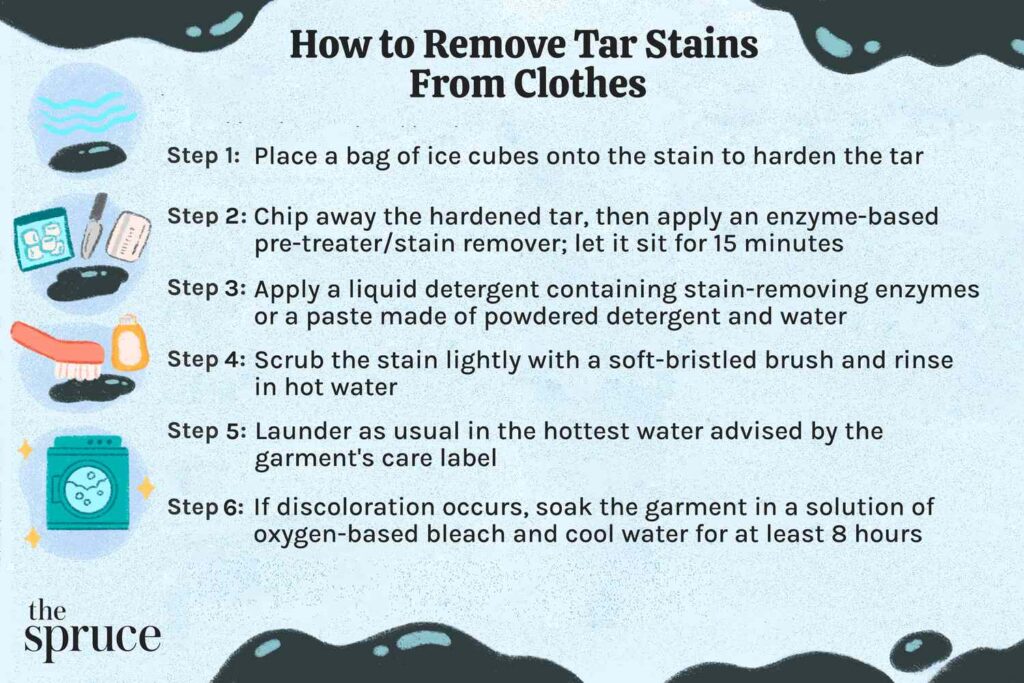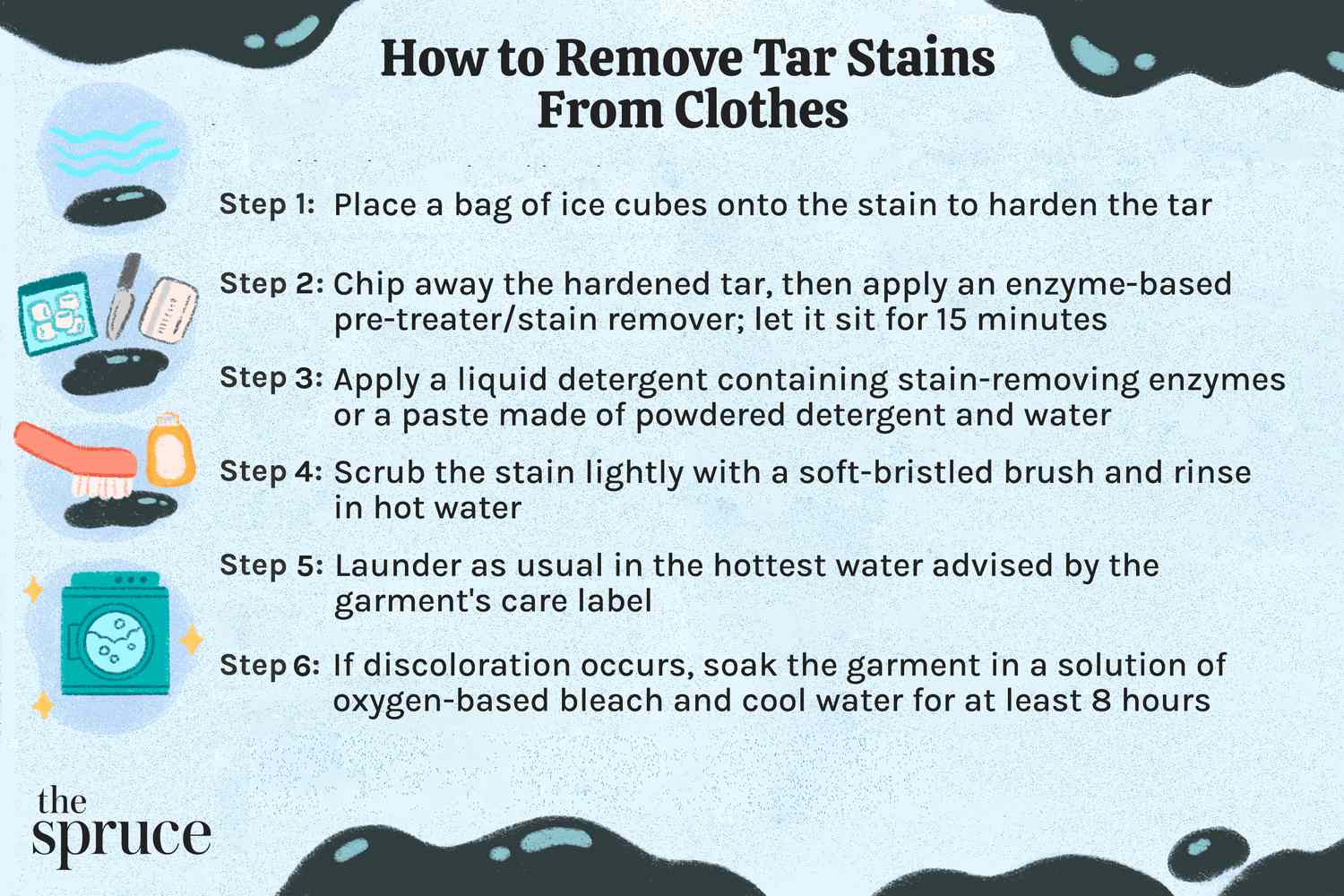
How to Get Tar Off of Clothes: A Comprehensive Guide
Discovering a stubborn tar stain on your favorite garment can be frustrating. Whether you’ve brushed against freshly paved roads, encountered a sticky situation during outdoor activities, or simply had an unfortunate accident, knowing how to get tar off of clothes is an invaluable skill. This comprehensive guide will walk you through proven methods, from gentle home remedies to more robust solutions, ensuring you can salvage your clothing and restore them to their original condition.
Understanding Tar and Its Properties
Before diving into the removal process, it’s crucial to understand what tar is and why it’s so difficult to remove. Tar is a viscous, dark brown or black liquid derived from organic materials, often petroleum or coal. Its sticky, adhesive nature allows it to cling tenaciously to fibers, making it resistant to ordinary washing and cleaning methods. The key to successful tar removal lies in breaking down its chemical bonds and loosening its grip on the fabric.
Essential Tools and Materials
Having the right tools and materials on hand will streamline the removal process and minimize the risk of damaging your clothes. Here’s a checklist of items you might need:
- Dull knife or scraper
- Cotton balls or clean cloths
- Rubbing alcohol (isopropyl alcohol)
- Dish soap
- Baking soda
- Butter or cooking oil
- Commercial stain remover
- Soft-bristled brush
- Dry cleaning solvent (for delicate fabrics)
Always test any cleaning solution on an inconspicuous area of the fabric first to ensure it doesn’t cause discoloration or damage.
Step-by-Step Guide to Removing Tar Stains
Follow these steps to effectively get tar off of clothes:
Step 1: Act Quickly
The fresher the stain, the easier it is to remove. As soon as you notice the tar, avoid rubbing or spreading it further. Gently blot the area with a clean cloth to remove any excess tar.
Step 2: Harden the Tar
Apply ice to the tar stain to harden it. This makes it easier to scrape off. Place ice in a plastic bag to avoid wetting the fabric directly. Leave the ice on the stain for about 10-15 minutes.
Step 3: Scrape Off Excess Tar
Using a dull knife or scraper, gently scrape off the hardened tar. Work from the edges of the stain toward the center to prevent spreading. Be careful not to damage the fabric fibers.
Step 4: Apply a Solvent
Several solvents can effectively dissolve tar. Here are a few options:
Rubbing Alcohol (Isopropyl Alcohol)
Dab rubbing alcohol onto the stain using a cotton ball or clean cloth. Work from the outside in, gently blotting the area. The alcohol helps to break down the tar. Repeat as needed.
Butter or Cooking Oil
Believe it or not, butter or cooking oil can help loosen tar. Apply a small amount to the stain and let it sit for about 30 minutes. The oil helps to dissolve the tar’s adhesive properties.
Commercial Stain Remover
Follow the manufacturer’s instructions for applying a commercial stain remover designed for oily or greasy stains. These products often contain solvents specifically formulated to break down tar.
Step 5: Wash the Garment
After applying the solvent and allowing it to sit, wash the garment in the washing machine using cold water and a mild detergent. Avoid using hot water, as it can set the stain. If the stain persists, do not put the garment in the dryer, as the heat can make the stain permanent.
Step 6: Inspect and Repeat if Necessary
After washing, inspect the garment to ensure the stain is completely gone. If any residue remains, repeat the solvent application and washing steps. For stubborn stains, you may need to try a different solvent or seek professional help.
Dealing with Delicate Fabrics
Delicate fabrics like silk, wool, and linen require extra care when removing tar. Avoid using harsh solvents or abrasive scrubbing, as these can damage the fibers. Instead, consider these options:
- Dry Cleaning Solvent: Apply a small amount of dry cleaning solvent to the stain using a clean cloth. Gently blot the area and allow it to evaporate. Repeat as needed.
- Professional Cleaning: For valuable or delicate items, it’s best to consult a professional dry cleaner. They have the expertise and equipment to safely remove tar stains without damaging the fabric.
Home Remedies for Tar Removal
In addition to the methods outlined above, several home remedies can help get tar off of clothes:
Baking Soda Paste
Mix baking soda with a small amount of water to form a paste. Apply the paste to the stain and let it dry completely. Once dry, brush off the paste and wash the garment as usual.
Dish Soap
Apply a small amount of dish soap directly to the stain and gently rub it in. Let it sit for about 30 minutes, then rinse with cold water. Wash the garment as usual.
Preventing Tar Stains
Prevention is always better than cure. Here are a few tips to avoid getting tar on your clothes:
- Be Aware of Your Surroundings: Pay attention to freshly paved roads or areas where tar may be present.
- Wear Protective Clothing: When working in areas where tar is likely, wear old clothes or protective gear.
- Avoid Contact: If you see tar, avoid touching it or brushing against it.
When to Seek Professional Help
Sometimes, despite your best efforts, a tar stain may prove too stubborn to remove at home. In these cases, it’s best to seek professional help from a dry cleaner. They have access to specialized cleaning solutions and equipment that can effectively remove tar without damaging your clothes. Also, if you are dealing with delicate fabrics, it is best to let a professional handle the stain removal process to prevent any irreversible damage.
The Science Behind Tar Removal
Understanding the chemical principles behind tar removal can help you choose the most effective method. Tar is primarily composed of hydrocarbons, which are non-polar molecules. This means that polar solvents like water are not effective at dissolving tar. Instead, non-polar solvents like rubbing alcohol, butter, or commercial stain removers are needed to break down the tar’s molecular structure.
Environmental Considerations
When using solvents to remove tar, it’s important to consider the environmental impact. Choose eco-friendly cleaning products whenever possible and dispose of used solvents properly. Avoid pouring solvents down the drain, as they can contaminate water sources. Consider using natural alternatives like baking soda or dish soap, which are less harmful to the environment.
The Importance of Patience
Removing tar stains can be a time-consuming process. Be patient and persistent, and don’t be discouraged if the stain doesn’t come out immediately. Sometimes, it takes multiple attempts to completely remove the tar. Rushing the process can damage the fabric, so take your time and follow the steps carefully.
Alternative Uses for Tar Removal Techniques
The techniques used to get tar off of clothes can also be applied to other surfaces, such as shoes, carpets, and even skin. However, always test the cleaning solution on a small, inconspicuous area first to ensure it doesn’t cause damage or irritation. For skin, mild soap and water, followed by a moisturizer, is usually sufficient.
Conclusion
Dealing with tar stains on clothing can be a daunting task, but with the right knowledge and techniques, you can successfully get tar off of clothes and restore them to their former glory. Remember to act quickly, choose the appropriate solvent, and be patient throughout the removal process. Whether you opt for home remedies or professional cleaning, this comprehensive guide provides you with the tools you need to tackle even the most stubborn tar stains. Next time you encounter an unfortunate tar incident, you’ll be well-equipped to handle it with confidence. [See also: How to Remove Oil Stains from Clothing] [See also: Best Stain Removers for Clothes]

